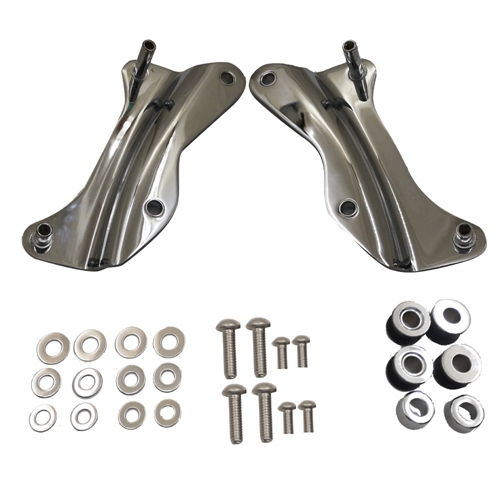In the precise structure of a motorcycle, each component plays an indispensable role and jointly supports the safety and comfort of the rider. Among them, the Motorcycle Connecting Plate is an important component that connects key components such as the frame, engine, and suspension system. Its importance is self-evident. This article will explore in depth the function, design, material selection, and impact of the motorcycle connecting plate on the overall performance of the motorcycle, aiming to provide readers with a comprehensive and in-depth understanding.
1. Functional analysis of motorcycle connecting plates
The motorcycle connecting plate, as the name suggests, is a bridge connecting the key components on the motorcycle. It not only carries the basic functions of transmitting power and maintaining structural stability, but also directly affects the handling, safety, and durability of the motorcycle. Specifically, the connecting plate ensures that the power of the engine can be smoothly transmitted to the wheels through precise design and manufacturing, while maintaining the rigidity and stability of the frame, so that the motorcycle can perform well at high speeds and complex road conditions.

2. The perfect combination of design aesthetics and functionality
The design of the motorcycle connecting plate not only focuses on functionality, but also takes into account aesthetic value. In the design of motorcycles, the connecting plate is often cleverly hidden inside the frame or as part of the frame, which not only ensures the integrity of the structure but also avoids interference with the appearance. At the same time, the design of the connecting plate also fully takes into account the need for lightweighting. Through reasonable material selection and structural design, unnecessary weight is reduced, and the acceleration performance and fuel economy of the motorcycle are improved.
3. Material selection: balance between strength and lightweight
The material selection of the motorcycle connecting plate is crucial, which is directly related to the strength, durability and lightweight of the connecting plate. Traditional connecting plates are mostly made of metal materials, such as steel or aluminum alloys. These materials have good strength and corrosion resistance and can meet the use requirements of motorcycles in harsh environments. However, with the advancement of materials science, more and more high-performance materials are used in the manufacture of motorcycle connecting plates, such as Carbon Fiber composite materials, titanium alloys, etc. These materials not only have higher strength and hardness, but also can achieve significant lightweight effects, further improving the overall performance of the motorcycle.
4. The impact of the connecting plate on the overall performance of the motorcycle
As a link connecting various key components, the performance of the motorcycle connecting plate directly affects the overall performance of the motorcycle. High-quality connecting plates can ensure efficient transmission of engine power, reduce energy loss, and improve the acceleration and top speed performance of motorcycles. At the same time, the stability and rigidity of the connecting plate are crucial to the handling of motorcycles. It can maintain the stability of the frame at high speeds and complex road conditions, and enhance the confidence and safety of riders. In addition, the durability of the connecting plate is also an important indicator of its quality. High-quality connecting plates can withstand long-term use and harsh environments, reduce the frequency of repairs and replacements, and reduce the cost of use.
Future development trends: intelligence and personalization
With the advancement of technology and the diversification of consumer demand, the design and production of motorcycle connecting plates are also constantly innovating. In the future, the connecting plate will be more intelligent, and through the integration of sensors and control systems, it will realize real-time monitoring and automatic adjustment functions to improve the safety and performance of motorcycles. At the same time, personalized customization will also become an important direction for the development of connecting plates. Riders can choose connecting plates of different materials, colors and patterns according to their needs and preferences to create a unique and personalized motorcycle.
Conclusion
As an important part of the motorcycle structure, the performance and quality of the motorcycle connecting plate directly affect the overall performance of the motorcycle. By gaining a deeper understanding of the function, design, material selection, and impact of the connector on the overall performance of the motorcycle, we can more fully understand the importance of this key component. In the future, with the continuous advancement of technology and the diversification of consumer demand, motorcycle connectors will present a more intelligent and personalized development trend, bringing riders a safer, more comfortable, and more enjoyable riding experience.